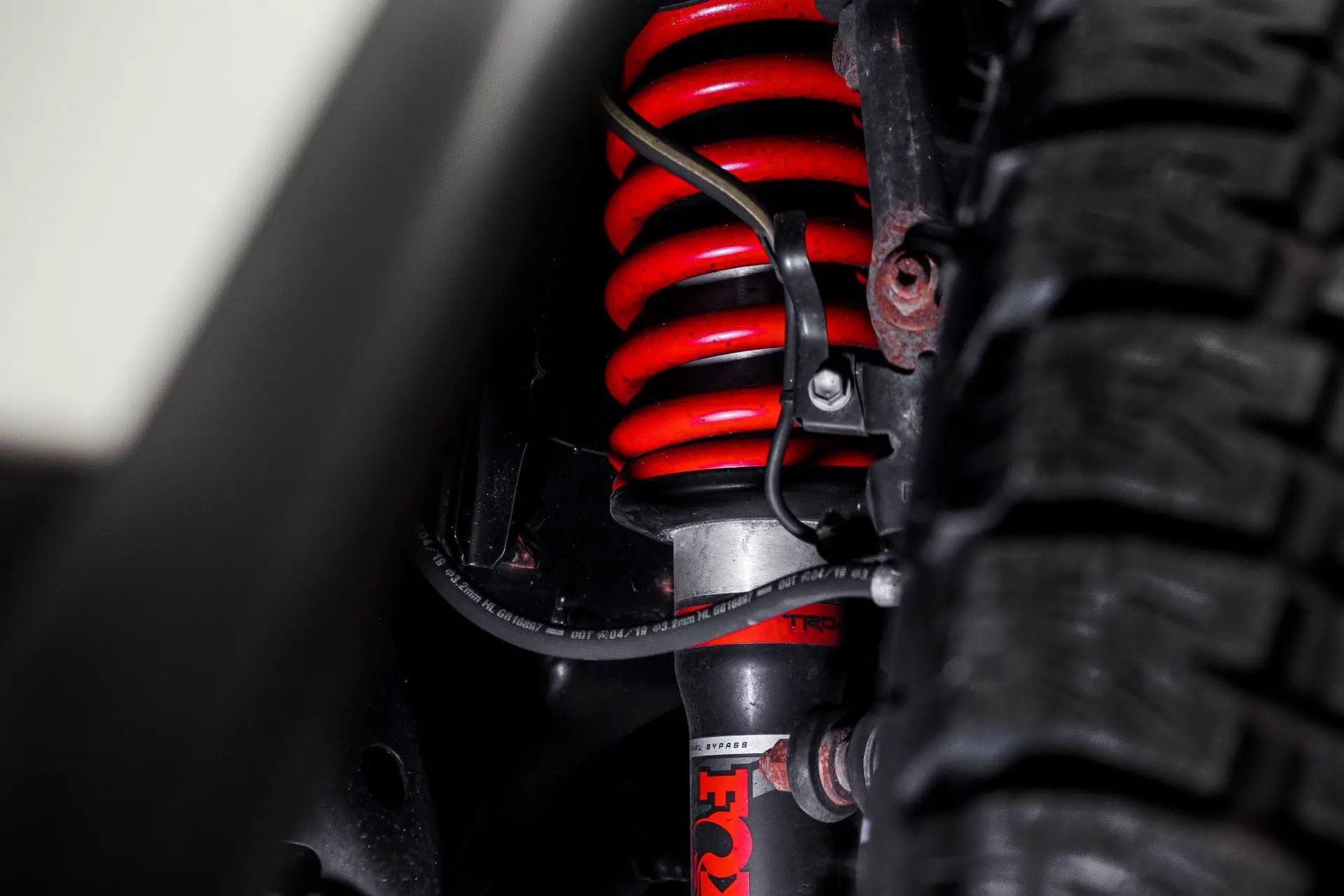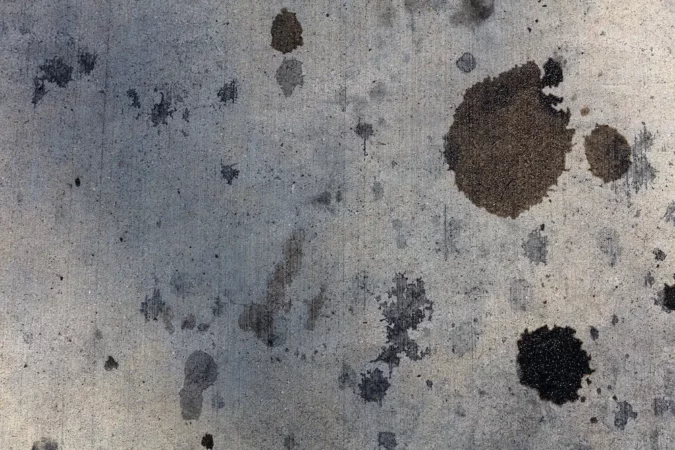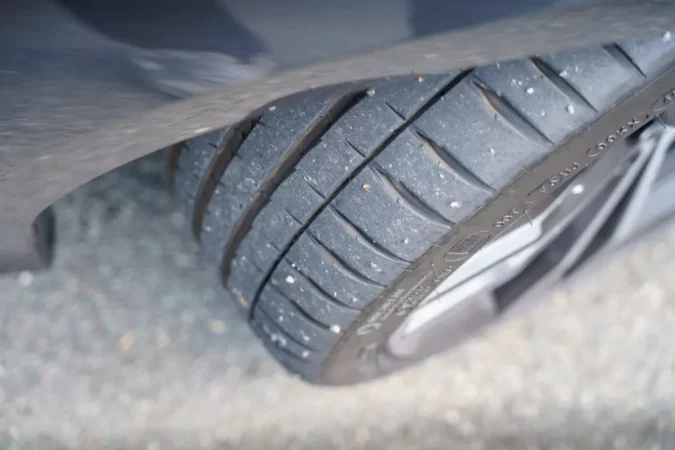Have you started noting weird symptoms from your suspension and you are looking for shocks and struts replacement? Well, if that is the case, then you are in the right place because, in this article, there will be a lot to cover on this topic.
- What Are Shocks?
- What Are Struts?
- Shocks vs Struts
- Why They Fail
- Symptoms
- Diagnostics
- Replacement
- Cost
- Conclusion
- FAQs
Doing your research before you do a replacement on any part should be your top priority. Why we are saying this? Well, because it is true. Research is key when it comes to doing any type of work on your car. Only by doing this, you will know what is best for you and your budget.
Especially when it comes to shocks and struts. There are cheap ones. But there are also some really expensive ones. And even if you don’t notice a difference at first sight, the engineering that goes into the more expensive products is really something quite astounding if you are asking me.
Especially KYB and Bilstein shocks. But more about that, we are going to elaborate further on this in the article. First, we are going to learn more about what are shocks and then we will take a look at what are struts. We will also compare the two.
Once we clear that out of our way, we will move on and learn more about the symptoms that these components produce. As well as the diagnostics process and the shocks and struts replacement and the cost. So, if you want to learn more, follow along.
What Are Shocks
Now before we dive into the shocks and struts replacement, let’s first discuss more on the basics when it comes to these components. First, we are going to cover the shocks and then we are going to cover the struts. So, without further ado, let’s dive into the topic.
So, what are shocks? Well, the term shock, refers to the shock absorber. This is a special component that is mounted on the car.
The prime goal of shocks is to absorb the impacts on the road. So, any time you drive over bumps, the shock will absorb the impact.
Shocks are improving comfort to a great extent. And not only that, but they also keep the chassis of the car in good shape. Since if there are no shocks, any impact on the road will be absorbed by the chassis and this will result in cracking. So, we can say that shocks are very crucial components.
Nevertheless, when it comes to their design, it is worth mentioning that inside there is a piston that moves in and out of the shock.
This piston basically pushes the hydraulic fluid that is inside the shock. We will not delve into detail. But the important thing that you should know is that the hydraulic fluid is doing all of the magic inside the shock.
If there is no hydraulic fluid, there will be air in the shock. And as you know, the air is compressible. Unlike hydraulic fluid which isn’t. So, in this case, if your shock is leaking, you need shocks and struts replacement. But more about that, we are going to cover it in a bit.
What Are Struts
We learned what are shocks, now let’s take a look at what are struts. How do struts differentiate from shocks?
Well, if you didn’t know, struts are also known as the MacPherson strut suspension (a popular alternative in contrast to a double wishbone suspension). For more insight, check out our comparison between a MacPherson strut vs a double wishbone. These struts are really important when it comes to the car’s suspension.
The core of the strut is the shock. But here is the place where similarities end. Even though the core of the strut is a shock, in reality, this is a completely different component from the shock.
The strut in car itself has a whole housing. And on this housing, the coil spring is mounted. And on top of the coil spring, the strut mount is then mounted.
So, we can see that the struts are much more complex components. Because on the shocks, you don’t have housing and you don’t have a steel coil.
So, not only that your struts absorb impact, but they also affect the steering of the car to a great extent. Since they are basically the heart of your suspension and steering. Struts basically hold the wheels of the car and the alignment in check. And also improve the handling to a great extent.
At the top, they are connected to the strut tower, while at the bottom they are connected to the wheel knuckle. Pretty similar to the shocks we must say.
But even though they are very similar, they are quite different and in the following chapter, we are going to further elaborate on this before we learn more about the shocks and struts replacement.
Struts vs Shocks
Now that we know what are shocks and what are struts. Let’s move on and see what is the difference between a strut vs a shock. How do these two component types differentiate from one another?
Well, the primary difference is their construction. As we noted, the shocks only contain a piston that is installed in a metal housing. This piston moves up and down depending on the road surface. And also absorbs the impacts.
Struts on the other hand are also known as coilover suspension. Otherwise, our guide on coilovers vs struts ought to give you more insight. These struts have a coil around them. And this coil is packed in a housing.
Struts actively participate in the steering and the alignment of the wheels. So, not only that they absorb impacts. But also help the car steer a lot better compared to applications from the old generation, like torsion bars for example.
Also, another thing to add that will really help you differentiate them is their mounting position. Struts are always mounted on the front wheels. So, you have two struts, one to the left and one on the right wheel.
On the other hand, shocks are always mounted in the rear. So, every car has shocks in the rear – in contrast to rear struts.
And these shocks are purely designed to absorb impacts and do not have anything with the steering. But what about the shocks and struts replacement? More on that, we will cover later on in this article.
Why Do Shocks And Struts Fail
Another thing that we would like to cover before we dive into the shocks and struts replacement is the cause of the failure of these components. What causes these components to fail?
Well, the primary cause for the failure of the struts and shocks is fluid leaks. No matter how good these shocks and struts are, they will eventually start to leak.
As we noted previously, inside them, there is hydraulic fluid. Similar to the fluid used in automatic transmissions. This fluid is red in color and is not compressible.
So, what can happen is a situation where the seals can leak. And this will allow the fluid slowly to leak and eventually, the shock or strut will fail completely.
These leaks are hard to spot since we don’t always look under the car and the condition of the shock absorbers and struts. So, they can leak out and never be noticed.
The only way to sort out this problem would be to rebuild them, as some people do. Or to replace them, which is the recommended thing to do in our opinion since rebuilds do not last for a really long time.
But what about the shocks and struts replacement? More about that, we are going to cover more in a moment after we learn more about the symptoms that these components develop when they fail.
Bad Shocks And Struts Symptoms
Now before we start discussing more on the shocks and struts replacement, let’s first take a look at the symptoms that will be present whenever your shocks or struts fail.
Knowing the symptoms is really useful because you will be able to diagnose the problem by yourself. And what is worth noting is that they share most of the symptoms since their core function is to absorb impacts. So, let’s cover the symptoms in detail.
1. Visible Leaks
The first symptom that we are going to cover before we dive into the shocks and struts replacement is the situation when you have visible leaks on the shock or strut.
These leaks develop at the bottom of these components and sometimes can leak on the tire sidewall and on the ground as well.
Also, these leaks are not the same as your regular oil leaks. This strut or shock does not use engine oil but hydraulic fluid. So, the fluid that will leak will be red in color.
Also, if the shocks have leaked out and you haven’t noticed, there will be sludge on the shock or strut. And on this sludge, there will be a lot of dirt that has stuck to it. So, this is one of the ways that you can diagnose this problem and determine if you need shocks and struts replacement. Now let’s move on to the next symptoms.
2. Car Feels Bouncy
The next symptom on our list that indicates a need for shocks and struts replacement is the situation when the car feels bouncy. So, why is this the case, why would a car feel bouncy when you have a blown shock or strut?
Well, this would be the case because the fluid that was in these shocks or struts has leaked out. Now they are empty or low on fluid.
And this fluid is replaced by air. And as we all know, the air is compressible. This means that the air that is filled inside of these shocks is compressed constantly.
And this increases the travel of the piston. So, the piston can go completely through and then once the car escapes the bump, the shock will return to its original position in an instant. And this will cause the car to bounce.
So, if your car behaves like a balloon while driving on uneven terrain, this means that your shocks or struts are blown and you need to learn more about the shocks and struts replacement. But more about the replacement, we are going to cover in the following chapters.
3. Increased Body Roll
Next on our list of symptoms of bad shocks and struts is the increased body roll. So, what is body roll?
Well, body roll in simple words is the situation where the car leans too much while you take a cornet at faster speeds.
Usually, vehicles with big body roll are older classic cars, as well as trucks and SUVs. But this body roll is often not very noticeable unless you drive at great speed while cornering.
And when it comes to worn-out suspension components, you will notice this body roll more and more often. So, if the car leans on the side quite a bit while cornering. It means that you have a worn-out suspension. Thus, you need to consider the suspension repair costs.
And in this case, you probably need to do a shocks and struts replacement on your car to sort this issue out. More on how you can do that, we are going to elaborate further down in this article. Now let’s continue with the symptoms.
4. Unusual Tire Wear
The next symptom on our list of bad shock or strut symptoms is unusual tire wear. So, what is uneven tire wear, and why this could be a problem?
Well, uneven tire wear is a situation when your tires do not wear evenly. You could have one tire that wears evenly and the other tire wears on the inner or outer side.
In short, this is what causes tire wear on the inside – otherwise known as inner tire wear or inside tire wear. Otherwise, you might also notice the outside of your front tires wearing.
Sometimes when you have bad shocks or struts, tires are susceptible to tire cupping.
Cupped tires on your car is a situation that is caused by the bouncy ride. So, the car bounces and vibrates all the time. So, tires can have flat spots randomly. This is basically tire cupping.
So, now you see why you need shocks and struts replacement before problems become too big. Now let’s move on to the next symptom.
5. Rear End Squats Under Acceleration
Another very common symptom that is associated with bad shocks and struts is the situation when the rear end squats under heavy acceleration.
So, if you try to accelerate quickly, it is normal for the car to start pulling. But the travel of the rear end should be limited since you are not driving a 1,000-hp dragster.
For a normal car, this squatting should be minimal. And if the car squats a lot while you apply the foot on the throttle. It could mean that your shocks are worn out.
So, if you notice that your body is leaning to the rear while you accelerate, then this is probably caused by worn-out shocks (aka bad shocks) in the rear end and this problem needs sorting out. Shocks and struts replacement will be probably needed. But more on the replacement, we are going to cover in a bit. Now let’s take a look at the last symptom.
6. Front End Dive Under Braking
And the last symptom on our list is the situation when your car dives under braking. For example, you brake hard. In this situation, you will notice how the front end dives forward.
Diving when braking hard is somewhat normal. But not when your car dives when you put minimal effort when it comes to braking.
So, if your body lurches forward when you apply the brakes, it could mean that the struts on your car are beat up and worn out.
And in this situation, you will first have to diagnose them and then do shocks and struts replacement. And precisely on how you can diagnose these components, we are going to further elaborate in the next chapter in great detail.
How To Diagnose Bad Shocks And Struts
Now that we covered the symptoms of bad shocks and struts, let’s move on and learn more about how you can diagnose bad shocks and struts. How you can pull this off on your car?
Well, there are some things that you can do. The first thing will require an inspection of the shocks and struts. For this, you will need to gain access behind the wheel.
So, you can rotate the tires completely to the left or right to inspect the struts. And remove the rear wheels to inspect the shocks.
For this purpose, you want to check for leaks and grease on the shocks and struts. If there are leaks or grease spots that are covered with dust, then you definitely have either a brake fluid leak or a leak from the shock.
Another method that you can try is to apply pressure on the shock tower. Just lean over with your hands at each shock/strut tower. If the vehicle feels bouncy, then the shock or strut is probably bad and has to be replaced.
You can also rely on the symptoms like uneven tread wear when the nose dives and the rear squats. When you have a situation where the car bounces over bumps. All these symptoms indicate a problem with the suspension and mean that you need shocks and struts replacement.
But how this replacement is done? Let’s learn more about that in the following chapter.
Shocks And Struts Replacement
So, we learned how you can diagnose bad struts or shocks. Now let’s take a look at the shocks and struts replacement. How you can replace these components in your car? Let’s first cover the struts.
When it comes to the replacement of the struts, you will need a special tool to compress the spring. Because if you don’t compress the spring, you could hurt yourself really badly.
Besides that, removing the strut and installing a new one is a very forward process. You just remove the wheel, then unbolt the bolts on the strut tower and the ones that hold the strut to the knuckle.
Once the strut is compressed, you can just slide off the old strut and place the new one in position. More about the process you can check in the first video.
Shocks on the other hand are much more straightforward when it comes to replacing them. For this purpose, you will only need to jack up the car and remove the wheel.
Then unbolt the bolts holding the shock at the bottom and on the top. Then the old shock will slide off. Once you do this, you can repeat the same process and complete the shock absorber replacement job. More about the detailed process, you can check in the second video.
Shocks And Struts Replacement Cost
Now that we covered the shocks and struts replacement, let’s learn more about the cost involved in this type of work. How much will the shocks and struts replacement cost?
Well, for an average car, replacing these components is not that expensive. A set of struts will cost you $300 for the strut replacement cost. And a set of shocks usually goes for $150 to cover the cost of replacing shock absorbers.
Still, if you go for more premium parts, you can expect to pay up to $300 for each strut and $150 for each shock. So, the cost of replacement rear shocks might continue to increase, still.
Installation is also not expensive. The installation of two struts will cost you about $120. For the shocks, it can be even cheaper. Also, you will definitely need an alignment. And the alignment can cost up to $80.
Shocks And Struts Replacement: In Conclusion…
In this article, we have covered quite a bit when it comes to shocks and struts replacement. First, we covered the basics of these components and the symptoms they make, as well as why they fail.
Then we focused on the shocks and struts replacement, as well as the costs involved in this type of work on your car.
Frequently Asked Questions
Now let’s answer some frequently asked questions.
What Is A Strut On A Car
A strut is also known as a MacPherson strut. This is a suspension component that has many roles. It absorbs impacts and acts like a shock absorber. And also helps with wheel alignment and steering.
How Long Do Struts Last
Struts should last about 60,000 miles with no problems. When they fail, they start to leak. And this is one of the ways that you can notice a failing strut.
What Are Shocks On A Car
Shocks are also known as shock absorbers. Shocks are components designed to absorb bumps. These components are basically consisted of a piston that is mounted in a metal housing. And in this housing, the piston is regulated by hydraulic fluid.
Are Struts And Shocks The Same Thing
No, they are not the same thing. Struts are mounted at the front, while shocks are mounted in the rear. You will notice how the strut has a coil spring around, while the shock doesn’t have this coil spring.
How Much Do Struts Cost
Struts are not very expensive. They cost about $150 each if you go for cheaper ones. If you go for expensive struts, you can expect to pay up to $300 per piece.
How To Tell If A Strut Is Bad
Telling if a strut is bad is easy. First, you need to check for leaks. And leaks are common at the bottom of the strut. There should be some red grease on the strut from the hydraulic fluid. You can also apply pressure on the strut tower. If the car bounces when you remove the pressure, then the strut is probably bad.





